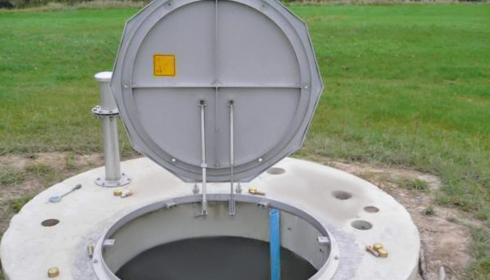There’s something quietly poetic about a lagoon. Calm waters mirroring the sky, life thriving beneath the surface — and yet, behind that serene view, there’s an entire world of engineering and environmental science at work. In today’s world, maintaining lagoons and other water systems isn’t just about keeping them clean. It’s about sustainability, compliance, safety, and long-term ecological balance. That’s where lagoon management comes into play — a blend of modern technology, chemistry, and a good dose of environmental wisdom.
The Hidden Complexity of Lagoon Systems
People often imagine lagoons as simple bodies of water. But managing one is more like maintaining a living, breathing organism. You have to understand nutrient levels, aeration, microbial balance, and hydraulic flow. Every parameter matters. A small imbalance — too much organic loading or not enough dissolved oxygen — can trigger odor issues, algae blooms, or even system failure.
That’s why smart lagoon management has evolved beyond traditional methods. Today, it involves real-time monitoring sensors, automated aeration control, and biological additives that work with nature instead of against it. Think of it as combining ancient water wisdom with twenty-first-century precision. The goal isn’t just efficiency; it’s harmony between engineered systems and natural processes.
The Role of Gas Chlorination in Disinfection
Water treatment doesn’t stop at cleaning; it extends to disinfection — ensuring pathogens don’t make their way back into circulation. One of the most trusted and efficient disinfection methods is gas chlorination, a process that’s been refined over decades. While newer technologies like UV and ozone get a lot of attention, gas chlorination still stands tall for its cost-effectiveness and reliability, especially in municipal and industrial setups.
When done properly, it offers precise control over dosage and consistent bacterial removal. Of course, it requires expertise — handling chlorine gas isn’t for amateurs. Trained technicians must follow strict safety standards and maintenance routines. But the payoff is a proven system that keeps drinking water safe and effluent discharges compliant. It’s the unsung hero of public health — quiet, powerful, and remarkably dependable.
Engineering for Longevity: Corrosion-Resistant Manholes
There’s another silent player in the world of water infrastructure — the humble manhole. It might not sound exciting, but these access points are critical to the health of an entire drainage or wastewater network. Traditional materials like concrete, while strong, often fail under corrosive environments caused by hydrogen sulfide gases, moisture, and chemical exposure. That’s where corrosion-resistant manholes have become a game changer.
These are engineered using composite materials or high-density polyethylene (HDPE), designed to resist the harshest conditions. They don’t crack, corrode, or leak — which means less maintenance and longer service life. In simple terms, they’re the difference between a system that needs constant repair and one that quietly does its job for decades. And in cities where budgets are tight and downtime is costly, that reliability matters more than ever.
The Human Side of Infrastructure
Behind every valve, pump, or monitoring station is a team of people — engineers, environmental scientists, and operators — who care deeply about water quality. They’re not just running systems; they’re guardians of community health. Lagoon operators often spend their mornings testing samples, adjusting aerators, and checking effluent clarity. Chlorination technicians calibrate systems down to fractions of a milligram. Maintenance crews crawl through confined spaces to ensure manholes and pipelines remain intact.
It’s tough, often unnoticed work. Yet, these professionals form the invisible backbone of civilization. Without their expertise, we’d face contamination, flooding, and ecological imbalance. The irony? The better they do their job, the less we notice them — and that’s a sign of true success.
Sustainability in Every Drop
The modern challenge isn’t just about maintaining infrastructure but making it sustainable. Old treatment models focused mainly on compliance; today’s systems aim for circularity. That means reusing treated water for irrigation, capturing biogas for energy, and minimizing chemical footprints. Smart lagoon designs now integrate solar-powered aerators, floating wetlands, and digital dashboards that alert operators before problems even start.
In chlorination, automation and leak detection technology are improving safety dramatically. And when it comes to materials, corrosion-resistant manholes and non-reactive piping reduce carbon footprints by cutting down replacement cycles. Each improvement, though small on its own, contributes to a much bigger picture — one where water infrastructure supports both people and the planet.
Lessons from the Field
Visit any wastewater plant or lagoon system, and you’ll hear stories that don’t make it into reports. Maybe about the night an aerator motor failed during a storm, or the day a small tweak in chemical dosing saved an entire fish population. Real-world water management is messy, unpredictable, and full of lessons. It’s about adapting — because no two systems, climates, or communities are the same.
That adaptability defines the future of infrastructure. It’s not just about installing better equipment but about fostering a mindset of curiosity and care. Operators who pay attention, learn from data trends, and anticipate issues before they escalate are the unsung innovators keeping our water systems alive.
A Quiet Revolution Beneath the Surface
It’s easy to overlook what lies beneath streets or behind treatment fences, but the world of water management is evolving faster than ever. The fusion of data analytics, durable engineering, and sustainable chemistry is rewriting the rules. We’re moving from reactive fixes to proactive design — from short-term patches to systems built to last.
And perhaps that’s the beauty of it all: progress that doesn’t shout but simply flows — just like the water it protects.
Because when lagoon management, disinfection, and infrastructure come together with care and foresight, it’s not just an engineering achievement — it’s a promise. A promise that clean, safe, and sustainable water will continue to shape our communities, quietly, efficiently, and endlessly.

